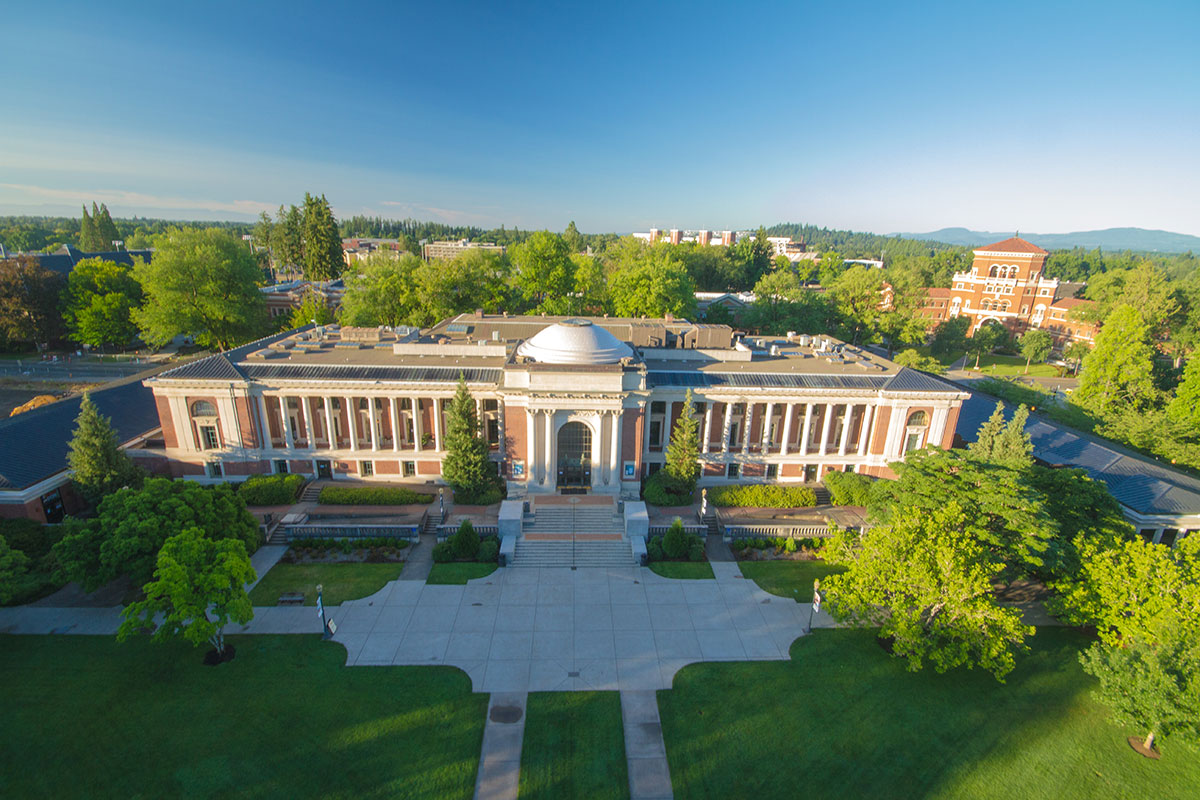
By Lee Anna Sherman
Oregon native Linus Pauling had already won two Nobel prizes when he turned his genius to the chemical complexities of diet and health. Not content to rest on his laurels as a world-renowned chemist and international peace activist, Pauling plunged with characteristic ardor into the study of micronutrients, particularly vitamin C, in the late 1960s.
Some four decades later, Pauling’s legacy is about to turn a corner in the field he pioneered. Under the leadership of biochemist Balz Frei, OSU’s Linus Pauling Institute is poised to expand its prominence in nutrition science with the construction of a state-of-the-art research facility in Corvallis, where Pauling began his career. More than $31 million in private donations (including $20 million from the Wayne and Gladys Valley Foundation and over $10 million from Pat and Al Reser) have been matched by state bonds for the $62.5 million building, scheduled to break ground in 2008.
The new science center will include part of the OSU Department of Chemistry and allow LPI to grow not only in size but also in scope.
“Right now, we are investigating three major disease areas in our laboratories, all relating to the role of diet, micronutrients and lifestyle,” says Frei, who holds the endowed Linus Pauling Institute Chair. “One is cancer chemoprevention, another is heart and metabolic diseases, and the third, our smallest, is healthy aging and neurodegenerative diseases. I’d like to expand our efforts in this third area.”
Frei, a specialist in oxidative stress and atherosclerosis, envisions three new research positions that will build on the work of LPI’s aging expert, Tory Hagen, holder of the Endowed Chair for Healthspan Research, who studies oxidative stress, lipoic acid and mitochondrial dysfunction in aging. The goal is to expand LPI’s investigation of the impact of diet and lifestyle on the basic biological mechanisms of aging and on neurodegenerative diseases like Alzheimer’s or Parkinson’s disease.
“We want to understand how nutrients interact with genes, turning them on or off, and how we can affect these mechanisms through diet and lifestyle to improve health in the elderly,” Frei says. “We also want to look at immunosenescence, the decline of the immune system as we age, and the role of nutrients and lifestyle in this process.”
Aging was of keen interest to Pauling himself. In the 1950s, he began to study the biochemistry of mental illness. How, he wondered, did nutrition affect brain chemistry? Could an optimum intake of micronutrients improve mental and physical health and decrease risk of age-related diseases? Despite the controversy sparked in 1967 when he dubbed the budding study of micronutrients and human health “orthomolecular medicine,” Pauling never backed down from his stance that micronutrients hold the key to fighting disease and fending off the worst ravages of old age.
OSU’s new Linus Pauling Science Center will carry his vision into the 21st century.
- Balz Frei’s Web site
- The Linus Pauling Institute
- The Ave Helen and Linus Pauling Papers Collection
- OSU Foundation
- National Center for Complementary and Alternative Medicine
- National Institute on Aging
- American Heart Association
OSU news releases
- OSU receives $77 million for Linus Pauling Science Center (10-26-07)
- OSU Linus Pauling Institute Expert: Vitamin E Trials “Fatally flawed” (9-21-07)
- Studies Force New View on Biology, Nutritional Action of Flavonoids (3-5-07)
- Study Citing Antioxidant Vitamin Risks Based on Flawed Methodology (2-27-07)
- Study Identifies Basic Link Between Age, Cardiovascular Disease (11-1-06)




1 Comment
Finally, Dr. Frei is getting the recognition he deserves and so too nutrition as a core science. Bravo!